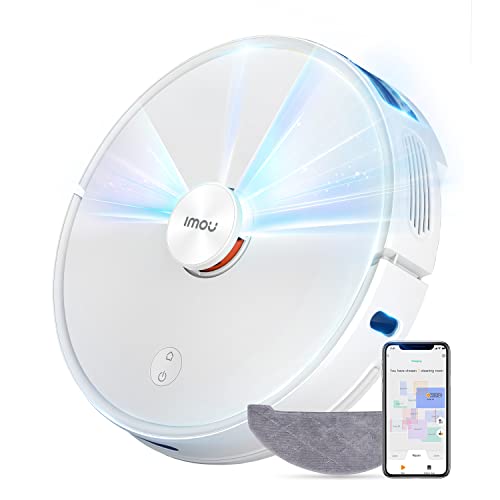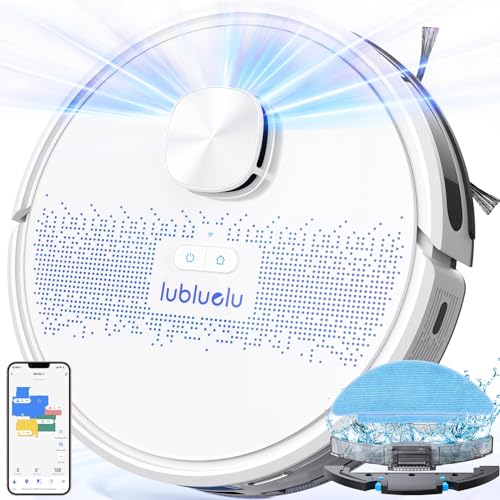 What is Vacuum lidar vacuum mop?
What is Vacuum lidar vacuum mop?
 Vacuum lidar makes use of laser beams to detect objects and determine their distance from the robot. This allows for accurate mapping and navigation. It helps the robot to navigate through obstacles.
Vacuum lidar makes use of laser beams to detect objects and determine their distance from the robot. This allows for accurate mapping and navigation. It helps the robot to navigate through obstacles.
Without SLAM, vacuums tend to move in random patterns and struggle around furniture. With SLAM, however, they can move in straight lines and stick to corners with ease.
Accuracy and precision
A robot vacuum that does not have lidar is only able to navigate using data that is visual. Although this technology is still able to provide a reliable cleaning experience, it’s a bit limited in terms of functionality and compatibility with smart home systems. Lidar offers a variety of features, including navigation and obstacle detection. Lidar navigation is also more precise and precise than camera-based systems.
What is the process behind this technology? It uses a laser pulse to scan the room, and determine distances. The device creates a virtual space map using a matrix which corresponds to various objects and surfaces in the room. The sensor then records the time it takes for each signal to reach the object and bounce back, giving it an exact measurement of the distance. This is what is the name of the technology – LIDAR or Light Detection And Ranging.
This allows the robot vacuum to plan precisely its route through the room and avoid obstacles. A robot vacuums with lidar with lidar technology can stay clear of obstacles like sofas or chairs and finish the cleaning quicker than a robot that does not have this technology.
In addition to preventing collisions in addition, this system can assist in identifying areas that require cleaning. This can be especially helpful for larger homes or when you would like the vac to pay special attention to specific rooms, such as the kitchen or living room. It also helps to prolong battery life by avoiding unnecessary movements and making less trips to the charging station.
Some robot vacuums come with additional features that can enhance performance, including edge detection and the ability to identify different types of flooring. Edge detection is an essential feature, particularly for robots used on stairs and ledges. It will prevent the machine from falling off and damaging furniture or the machine itself. Some models even offer the option to manually override the auto mode when it comes across an edge.
Other smart features that you might find in a robot with lidar include the ability to set virtual boundaries and designate particular areas to be cleaned. You can utilize the ECOVACS HOME app to draw an image of your house and draw virtual lines around the areas that you want the vacuum to clean. This can be helpful if you have expensive rugs or small spaces that are difficult for the robot vacuum with obstacle avoidance lidar to reach. The robot will then follow the routes that are designated and only touch the area that is required, thus avoiding the frustration of a missed spot.
Real-time Mapping and Navigation
Unlike navigation systems that use cameras, lidar is capable of mapping the environment in real-time. Robot vacuums can navigate better and avoid obstacles. This decreases the number of times they have to clean and omit areas. Lidar-equipped robot vacuums also perform better in areas with different floor surfaces as they are able to recognize the textures and patterns. In contrast to camera-based systems, lidar sensors are not affected by changes in lighting conditions and can detect objects on a flat surface or even behind glass.
In addition to being able to map the environment and map the surrounding area, vacuum lidar is able to determine its own position within space, and thus determine its course in real-time. This allows it to navigate through the room in a systematic manner taking in every edge and corner effortlessly. It also can detect the presence of various objects and determine their distance and height from the robot.
The lidar technology is somewhat limited in regards to its accessibility. Lidar sensors cost a lot, but continuous improvements may make them more affordable in the future.
The most effective DEEBOTs equipped with mapping technology have a variety of features to ensure that your home is thoroughly cleaned. The Dreame F9, for example features 14 infrared sensors to detect obstacles and obstructions. It also adjusts its route when it comes across an object on the stairs or is approaching an entrance. It will also activate an incline sensor to prevent it from falling down staircases.
Apart from SLAM, other technologies that can serve similar functions in a vacuum cleaner include cameras and gyroscopes. Gyroscopes are a simple way to stop the robot from crashing into objects, and they can aid in forming a basic map of the surroundings. They’re not as precise as systems using lasers, such as SLAM or Lidar. They can still provide an excellent quality of navigation at cheaper than other options. Cameras can also be an effective alternative to laser-based systems for mapping and navigation, as they do not require as much maintenance.
Obstacle Detection
Lidar-equipped vacuum robots are able to detect obstacles which allows them to navigate around them. This is because the sensors utilize laser beams to scan and map a room by measuring the amount of time it takes for light to bounce off objects and return to the sensor. These sensors can then create an 3D map of the space and provide real-time distance measurements, and removing the requirement for cameras.
Lidar sensors are extremely precise but they have some limitations. They can mistake clear or reflective surfaces as obstacles, a lack of ability to recognize small objects and difficulties working in a room with complex layouts. These limitations could affect the navigation capabilities of the vacuum cleaner, which can cause it to miss areas of the floor or not recognize an object in its route.
Manufacturers sometimes combine multiple mapping technologies to give the best navigation experience. For instance, some models include both Lidar and SLAM (Simultaneous Localization and Mapping). This is a significant expense, but it also provides the most precise navigation. It allows the robot vacuum with lidar to begin by creating a map for your home, making sure that it cleans your home in a systematic way instead of randomly.
Other mapping technologies include cameras and gyroscopes. While these systems can keep the robot from crashing into objects and can help it form the basic map of your home, they cannot achieve the same level of accuracy as systems that use lasers like Lidar and SLAM.
Your personal preferences and your budget will ultimately determine the type of mapping system you decide to use. Some prefer a model with gyroscopes, while others prefer an advanced navigation system that has more advanced features. The best method to determine which one is right for you is to try out various models of vacuum robots and think about the features that are most important to you.
Easy Maintenance
With the companion app, you can designate virtual boundaries to keep it from certain areas or to set room-specific cleaning schedules. You can also view its progress, change the power settings, and check its HEPA filter and side brushes. The dirt compartment is accessible under the black glossy cover on top. It’s best robot vacuum lidar to empty it into a garbage bin when it is full. It’s also easy to pause and resume cleaning sessions and share the vacuum with other members of the household.
